What is color temperature?
The concept of color temperature is a physical indicator that reflects the color of a light source. Measured in Kelvin. When studying the temperature of light, scientists took as a basis an absolutely black body, heating which in a vacuum you can see a change in the shade of the glow:
- 0K – black;
- 500-600K – red with a black tint;
- 2500K – yellow;
- 2800-3000K – warm white;
- 5000-5500K – white neutral light;
- 7000-7500K – cold white light;
- 9000-1000K – blue light.
Interior light sources, although they do not heat up so much, emit artificial glow in the range of 2500-7000K. In this case, a value of 2-4 thousand is considered a warm shade of light (has a yellow undertone), 4-5 thousand is neutral white, lamps with 5-7 thousand provide cold lighting.
Important! Knowing how temperature is measured and what values correspond to what indicators allows you to understand what color the warm light of a lamp will be – orange, yellow, light yellow. The same with cold: white, light blue, light blue. The higher the number, the bluer the range.
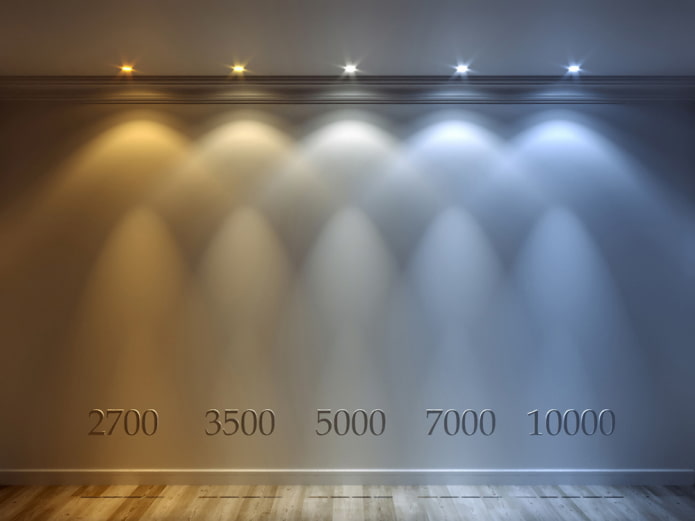
Which light is better?
Posing the question “What is better – warm white light, bluish or neutral?” is as absurd as trying to determine which tone is more beautiful – orange or green.
However, shades of different color temperatures have some differences that make them more or less suitable for different situations.
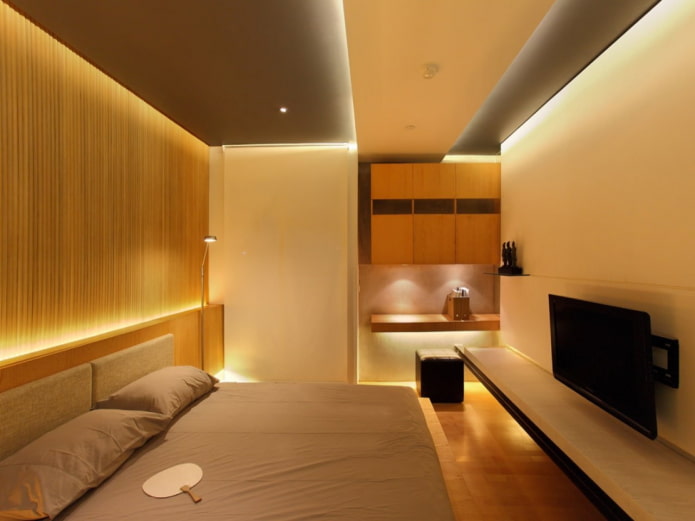
- Answering the question of which light is brighter – warm or cold – definitely the second. More precisely, this is how it is perceived by our eyes: with the same power of LED lamps, lamps with a cold glow will be brighter.
- When choosing lighting close to natural sunlight, give preference to neutral lamps. The difference between them with cold and warm lighting is that white LED lamps do not change the perception of the surrounding environment in any way.
- Warm light looks like the sunrise or sunset. Incandescent lamps have an amazing ability to create a relaxed atmosphere: they act like electric candles. Also, warm-colored lamps emphasize the warm palette in the interior, neutralize cold elements.
Important! Light temperature (warm, white, cold) does not affect visual acuity in any way: only a lack of brightness can “strain” the eyes (power is measured in lumens).
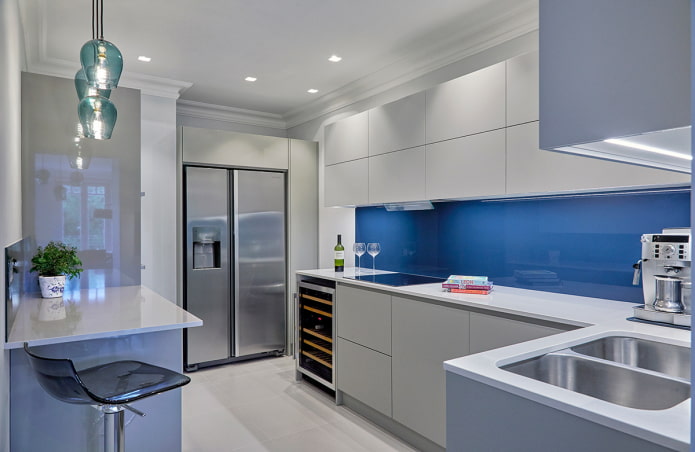
Rules for using and organizing lighting
Cold and warm lighting affect not only the perception of colors, but also a person’s well-being. Below we will consider the features of the impact:
- warm tones soothe in the evening, gently awaken in the morning: they produce a soft, non-oppressive effect, create coziness;
- neutral shade of light imitates daylight, promotes the excitation of the central nervous system, brain activity;
- blue spectrum bulbs are most similar to the glow of the moon, therefore, if used incorrectly, they can cause depression, apathy.

Based on the impact on mood and surrounding objects, we draw conclusions on the use of lighting devices:
- Warm light in the interior is necessary to create a cozy atmosphere: suitable as additional lighting for relaxation in the living room, pendants above the dining table, sconces or floor lamps in the reading corner, lighting in the bedroom, children’s room in the evenings before bed.
- Cold light in the room invigorates only in small quantities, so a table lamp on the desk or lighting in the shower in the morning is enough for concentration. It is not recommended to use fluorescent lamps with a blue undertone as the main scenario in any room.
- Neutral lighting fixtures are called natural for a reason: they most correctly imitate familiar daylight, so experts recommend white lamps for most people as the main sources.
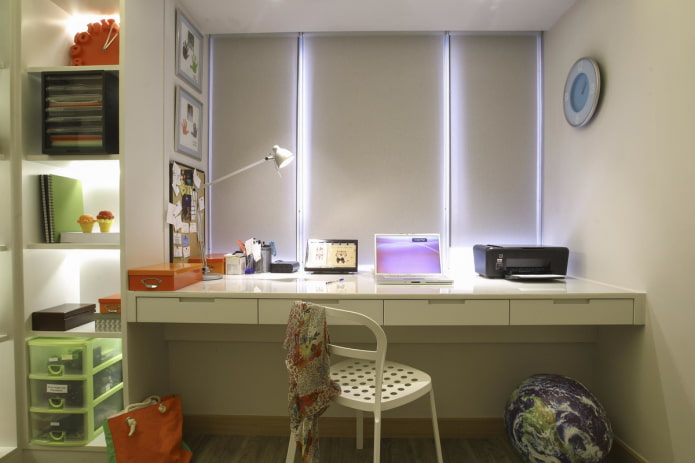
The last nuance of choosing the temperature is the designer’s. Some light shades are literally associated with a particular interior style, so they deserve special attention.
- All vintage, palace, classic and retro styles gravitate towards a temperature of up to 4500K (warm light). The main reason is the visual similarity with the flame of a candle or kerosene lamp, which were used at the origin of these trends.
- Cold light is appropriate in ultra-modern interiors: minimalism, hi-tech. In combination with glossy surfaces, an abundance of glass and metal, LEDs set the right mood. Cold bluish lighting in an apartment creates a slightly hospital atmosphere, so you should not overdo it.
But going to extremes is not always right. Considering the peculiarities of the influence of each range, it is best to select the most suitable bulbs for each scenario in all rooms, which will make rest more comfortable and work more productive. For example, the main white light in the living room can be replaced by additional warm light intended for cozy family gatherings.
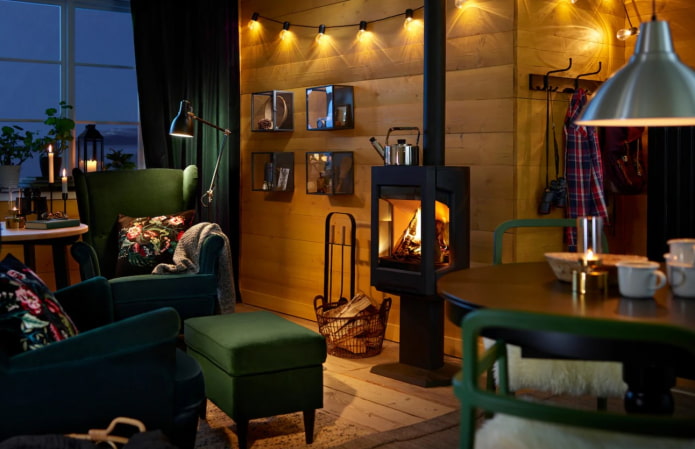
Recommendations for different rooms
The choice of lighting depends primarily on the location. Let’s consider what parameters should be chosen for each space.
Kitchen
Standard kitchen lighting includes 3 scenarios: general, work area, dining area.
The dining area is a table, a bar counter, an island, a peninsula. The main task of the lamps here is to create a pleasant atmosphere for eating. The warm spectrum is best suited to it – 2500-4000K.
Working in the kitchen, whether it is washing dishes, cutting food or directly cooking on the fire, requires concentration. The shade closer to cold is best for sharpening perception: 5500-6500K. You can illuminate the countertop with built-in spotlights, track lights, sconces, pendants, LED strips under the cabinets.
The last point is the center. In small kitchens, the first two sources may be enough, but if part of the room remains dark, it is recommended to turn on the third – the central one. A regular chandelier or several spotlights with white lamps will do the job perfectly.
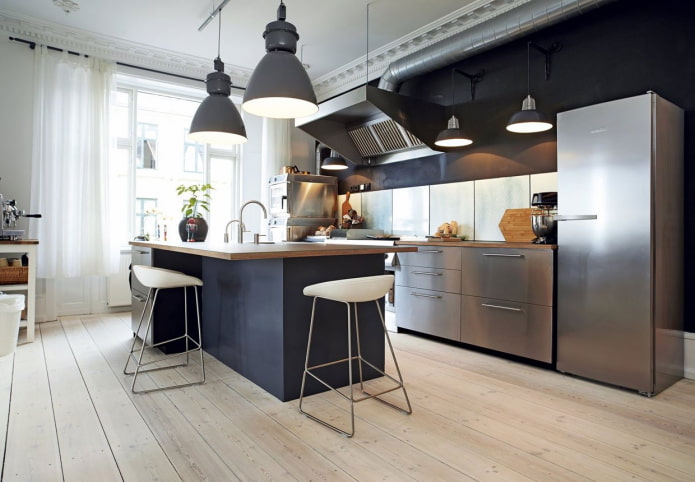
Bathroom
Lighting scenarios will tell you your habits: before you start arranging the bathroom. Think about what the bathroom is used for?
Possible options: an invigorating contrast shower in the morning; a relaxing bath with salt before bed; styling, makeup, shaving near the mirror.
Based on the list, we select lighting:
- White with a cold undertone will help you wake up – 5000-6500K.
- On the contrary, the warmest possible light will help you relax – 2500-3000K.
- Does not distort the reflection in the mirror, helps with applying makeup – neutral glow in the region of 5000K (mirrors with backlighting are usually equipped with such a strip).
Important! The bathroom usually seems colder than it actually is due to its finishing and dampness: that is why warm light looks better in any bathroom.
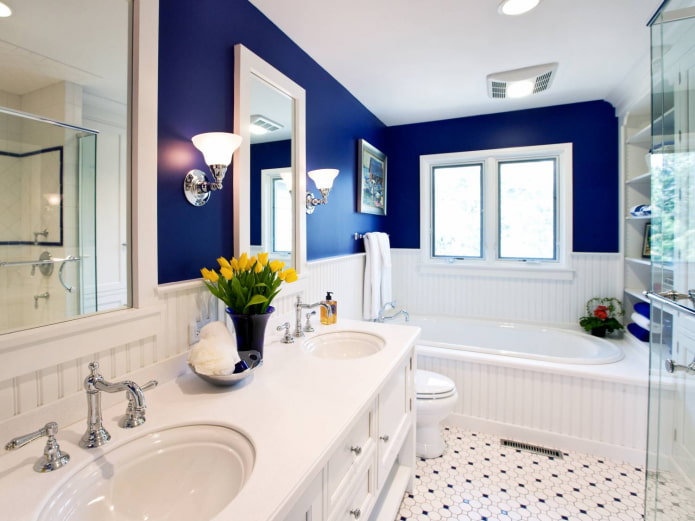
Hallway
The main difference between the hallway and other rooms is the absence of a natural source, i.e. a window opening. That is why the best option for central lighting, as well as additional points near a mirror, closet, etc., is imitation of daylight. The lamp is neutral, the range is 4500-5500K.
The light in the hallway should be uniform (several small lamps instead of one large one) and diffused (it is best to choose lamps with frosted glass).
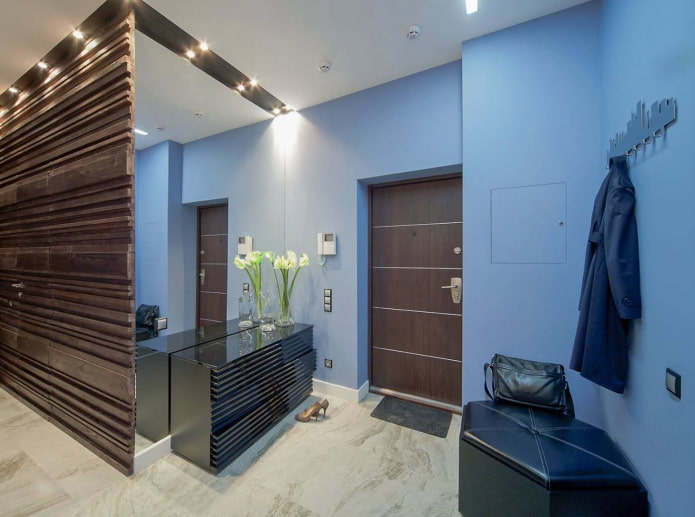
Bedroom
The choice is influenced by the number of zones in the rest room. If the space contains only a bed and is used exclusively for night sleep, warm light in the bedroom is the most logical.
When the bedroom is multifunctional, for example, it contains an office or a makeup area, the lighting scenarios also need to be divided.
- Main ceiling light: yellow, can be closer to white (4000-5000K).
- Bedside lamps: as warm as possible (2500-4500K).
- Mirror on the dressing table: neutral (5000-5500K).
- Desk: neutral with a cold tint (5500-6500K).
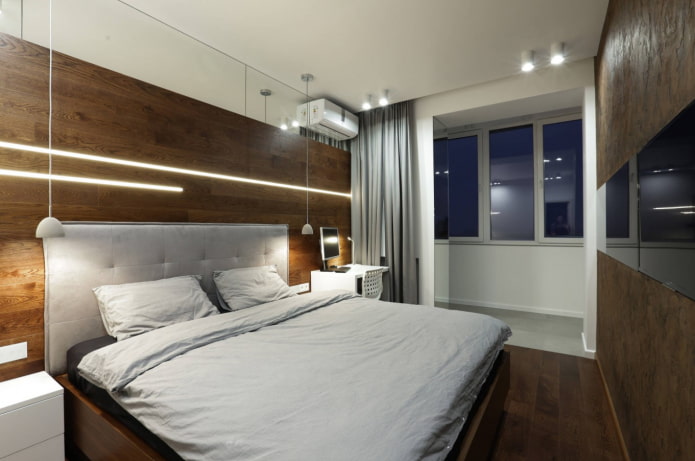
Living room
The hall is usually multifunctional, so the light here not only performs the main function, but also zones the space. Main scenarios:
- Center. A chic chandelier sets the tone for the surrounding environment, is turned on on special occasions: for example, when receiving guests. To make the atmosphere conducive to communication, choose a warm white shade (3500-5000K).
- Recreation area. Can be illuminated by ceiling spotlights, a track or floor lamps. Warm range 2500-4500K.
- Reading area. If books are your way of relaxing, choose lighting with a minimum temperature of 2500-4500K.
- Desk. The recommendations are the same as in the bedroom: 5500-6500K. The light can be warmer if you spend a lot of time working and colder if you work in short intervals.
- Decorative lighting. It is turned on, for example, while watching movies. The temperature does not matter, low power is more important.
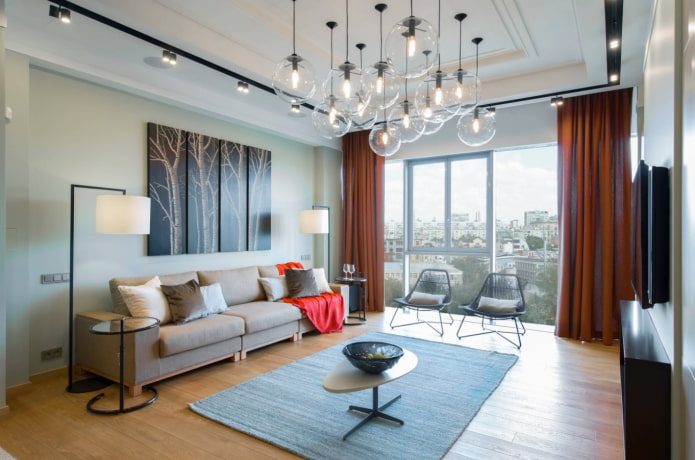
Children’s room
A room that can compete with the living room for the championship in the number of zones is the child’s room. It must have:
- central light (usually used during games),
- work area,
- sleep area.
Babies or children suffering from nyctophobia (fear of the dark) must have a night light in the room.
When choosing materials for a child’s room, pay special attention to the psychological impact: children and adolescents have a less stable psyche than adults, so they perceive any factor much more acutely.
In this regard, the lighting in the room of a hyperactive child is chosen warm – it calms and relaxes. For overly calm boys or girls who need to be stirred up a bit, screw in white bulbs: they charge with energy.
An excessively cold range is not recommended for children with ADHD (they may become overexcited) or melancholic kids (they will become even more withdrawn).
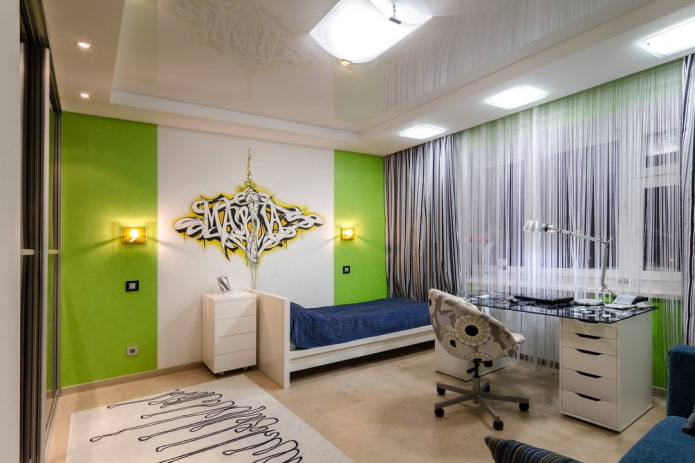
Office
Not everyone has a separate room in which to work quietly. But if you are one of the lucky ones, pay close attention to the lighting settings in it.
The rules for the work area have already been outlined in the “Bedroom” and “Living Room” sections: neutral white (5000-5500K) has the best effect on productivity and concentration. At the same time, the longer you are in the office, the closer to 5000 the value on the bulb should be.
Important! There should be at least 2 light sources in the office: a ceiling lamp + a lamp directly above the desk.
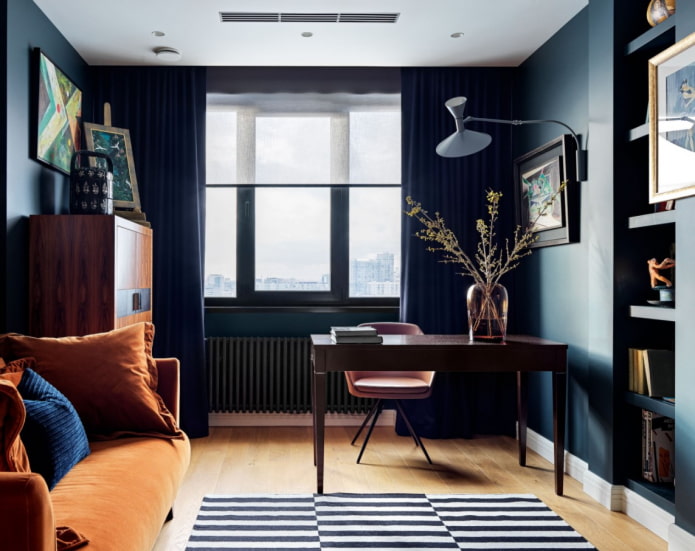
Just as there is no good or bad shade in the rainbow, there is no positive or negative temperature in the light spectrum. Learn to choose the right lighting and feel how your perception and mood change with just a click of a switch.
Now reading:
- Tulle with eyelets: 70+ interior photos and tips for window decoration
- Vertical Flower Beds: 5 DIY Ideas and Real Photos
- Country Living Room: 40 Photos and Stylish Interior Design Ideas
- Kitchen with corner sink: 33 photos, advantages, disadvantages and installation tips.
- 20 Creative Solutions for Decorating Small Spaces